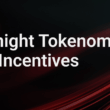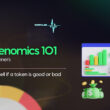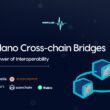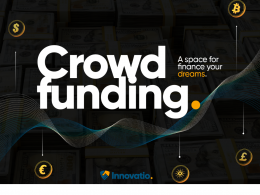In the traditional stock market, the objective of a listed fund or ETF (Exchange-Traded Fund), is to replicate the evolution of a certain group of stocks or indices, eg. the FTSE 100 (it is the benchmark stock index of the London Stock Exchange), and offers you the same performance as this index, less management fees.
Like Mutual Funds, ETFs give investors access to a portfolio of companies (stocks), bonds, or other asset classes (eg, commodities or real estate), and can be bought and sold on the stock market. Therefore, ETFs combine the advantages of Mutual Funds (diversification) and those of stocks (ease of negotiation).
The most important difference between ETFs and Mutual Funds is in the way they are traded. Investment Funds are traded directly by the company that manages them at the closing price of the current day, that is, at the net asset value, and ETFs are traded on the stock markets, in the same way as stocks. .
As with any investment, there is a risk of loss of capital and income. The liquidity of the products is not guaranteed. ETFs create pools of assets that help mitigate some of the risks associated with investing. This instrument is ideal for cryptocurrencies, to mitigate the impact of liquidity and volatility.
In an analogous sense for the crypto industry, the DTF protocol will offer alternative investments. DAO Traded Funds, or iDTFs, are passively managed vehicles curated by the community of finance professionals, seasoned investors, Cardano developers, and blockchain enthusiasts.
DTF funds are created by pooling assets. There are no hard and fast rules about which assets the community can choose to pool, but most funds will choose a certain quality, and use it as a condition for inclusion. For example, you could create a fund with some DEXes from the Cardano ecosystem, grouping together SundaeSwap, Ergo Dex, Cardax, Minswap, Adax, Orion, YaySwap, Polyswap, Vy Finanzas and Maladex.
An iDTF token will represent a user’s share of the underlying assets allocated to the fund. In the example above, users get direct exposure to those Cardano DEXes.
Each iDTF will provide exposure to curated baskets of quality digital assets. IDTFs will also be fully supported, and may be tailored to reflect market segments such as DeFi protocols, large-cap tokens, small-cap NFTs, and more.
Simply put, iDTFs make it easy for investors to act on their conviction and invest in the Cardano community and the broader cryptocurrency space. They are an obvious choice for newcomers, but also for seasoned community members looking for clear and broad exposure to the market.
The Significance of Traded Funds
The funds provide exposure to a wide variety of assets. This spreads risk across a pool of assets rather than putting all your eggs in one basket. In this way, you are protected from one of your assets causing a significant decline in your portfolio.
iDTFs, like ETFs and index funds, are passive investments. Of course, holders do not need to actively manage all the assets of a particular iDTF. On the other hand, constantly entering and exiting the different assets would entail significant costs due to transaction fees, swap fees, etc.
Traditionally, ETFs and index funds produce higher overall returns than most individually managed assets. The cryptocurrency market is still immature, and ETF-like products are in short supply. However, using traditional markets as a guide, average fund returns are about 7% better, as reported by MLabs in the proposal.
The White Paper covers in depth the architecture and functionality of the protocol.
In general, the DTF protocol will be fully automated where possible. The development of the product will include the basic functionality of the structure of the safe, the calculation of commissions and discounts based on the type of asset used to buy the fund, the application of community decisions reached through the system of governance, and most, if not all, of the management entity’s functionality.
The managing entity determines when and how rebalances occur. Depending on how the DTF community conducts the protocol, some iDTFs may incorporate a methodological entity that can be an individual or a group of individuals. The methodologists would take care of the most managed funds, calling the vault functions under the supervision of the community. They could also be assigned emergency responsibilities to keep iDTFs more volatile during rapid market changes.
The MVP (Minimun Viable Product) will incorporate the following functionalities:
- A multi-asset vault structure, encoded in a smart contract, that mints iDTF tokens on a pro-rata basis when receiving deposits. This is similar to how LP tokens are minted on other platforms.
- Configurable management entity that monitors the parameters of a fund as indicated in its prospectus.
- Basic rebalancing functionality for deposits that incorporates a rebalancing phase, a grace period, and an unlock phase where the deposit can be traded to rebalance it.
- Staking and voting
- Multi-asset deposit functionality
- Logic that defines the DTF deposit fees in relation to the asset allocation of a fund. For example, if a user pays for an underweight asset, the DTF fee is lower. If you pay on an overweight asset, the fee is higher
- The intuitive user interface should show the status of the fund and the user’s position / stake in it
- iDTF Tokens, which are minted at the time of deposit and are also redeemable at any time.
Budget
2 developers are required for 24 weeks to launch.
Total Cost: $ 70,400
MLabs intends this grant to be the seed money that will be used for the development of the initial product.
Roadmap
For the first month:
- Select a developer to lead the project.
- Complete the entire specification.
- Select a second developer.
- Start working on the basic functionalities.
For the third month:
- Multi-asset vault structure
- Tracker
- Re-Balancing Functionality
For the fifth month:
- Multi-asset deposit functionality
- DTF deposit fee logic
- User interface display
For the eighth month:
- General tests
- Readiness for audit
- Audit
Planned release for 4th Quarter 2022.
The Team
MLabsis an IOG Partner. It has more than 65 Haskell developers working on some of the most important projects in the ecosystem such as the Cardano Foundation, SundaeSwap, Liqwid Finance, Ardana, Minswap, Cardax, GeroWallet, among others.
MLabs has quickly become one of the leading development companies in the Cardano Ecosystem.
They are working with IOG to build Seabug, which will be the first live NFT market, using the PAB, and with many more projects in the early stages of development.
You can see the team members here.
GitHub https://github.com/orgs/mlabs-haskell/repositories
You can see the proposal in Catalyst: MLabs DTF (Dao-Traded-Fund)










